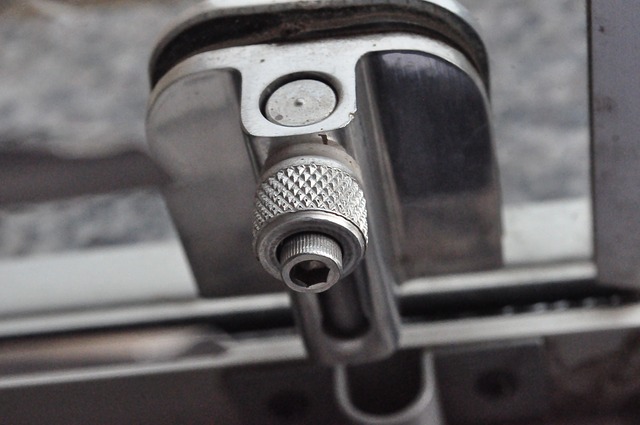Fixing v fastener

|
| A latch to fasten the window in position. |
Fixings are designed to attach objects to surfaces such as walls, floors, roofs, doors, holding them in place, usually on a permanent basis. They are a form of connector and play an indispensable role in construction. Usually a fixing is key to attach a component to one that is larger or immovable, such as fixing a cupboard to a wall, or a handle to a door, or a timber joist to a wall plate. These instances will require the use of fixings such as screws, plugs, bolts and nails.
In contrast, fasteners tend to be for holding things together, often of a similar nature, and of a smaller- or lighter-scale. In stationary, examples of this would be paper clips and staplers, which are fasteners and hold together sheets of paper – but they are not said to ‘fix’ them together.
In construction, staples from a staple gun can fasten sheathing to timber studs. Window latches are fasteners (not fixings) as they fasten a window for security but can be adjusted for opening. If the doors and windows were fixed in place, they would not be able to open.
Whether something is a fixing or fastener is not always clear as it can depend on the application and also on the way speech is used: a nail can be used to fix fence boards to posts, but it can also fasten a joist into a joist hanger. Yet others may maintain that the joist is ‘fixed’ into position by the nail. Depending on the interpretation, the nail in this example is both a fixing and a fastener.
The word 'fixing' can also be used to describe the physical process of fixing one thing to another or to the process of repairing something.
NB A fixture is '...an asset that is installed or otherwise fixed in or to a building or land so as to become part of that building or land in law’ (for example, a boiler)'. Ref HMRC
[edit] Related articles on Designing Buildings Wiki
- Adhesives.
- Cable tie.
- Clamp.
- Construction equipment.
- Construction tools.
- Crimp.
- Cramp.
- Fixings.
- Fixtures.
- Ground anchor.
- Industrial fasteners market.
- Rivet.
- Sneck.
- Soil nailing.
- Structural fasteners.
- Staples.
- Strap.
- Timber.
- Types of bolts.
- Types of fixings.
- Types of nails.
- Types of nuts.
- Types of screws.
- Types of washer.
- Upcycling buildings.
- Welding.
Featured articles and news
Government consultations for the summer of 2025
A year of Labour, past and present consultations on the environment, the built environment, training and tax.
CMA competitiveness probe of major housing developers
100 million affordable housing contributions committed with further consultation published.
Homes England supports Greencore Homes
42 new build affordable sustainable homes in Oxfordshire.
Zero carbon social housing: unlocking brownfield potential
Seven ZEDpod strategies for brownfield housing success.
CIOB report; a blueprint for SDGs and the built environment
Pairing the Sustainable Development Goals with projects.
Types, tests, standards and fires relating to external cladding
Brief descriptions with an extensive list of fires for review.
Latest Build UK Building Safety Regime explainer published
Key elements in one short, now updated document.
UKGBC launch the UK Climate Resilience Roadmap
First guidance of its kind on direct climate impacts for the built environment and how it can adapt.
CLC Health, Safety and Wellbeing Strategy 2025
Launched by the Minister for Industry to look at fatalities on site, improving mental health and other issues.
One of the most impressive Victorian architects. Book review.
Common Assessment Standard now with building safety
New CAS update now includes mandatory building safety questions.
RTPI leader to become new CIOB Chief Executive Officer
Dr Victoria Hills MRTPI, FICE to take over after Caroline Gumble’s departure.
Social and affordable housing, a long term plan for delivery
The “Delivering a Decade of Renewal for Social and Affordable Housing” strategy sets out future path.
A change to adoptive architecture
Effects of global weather warming on architectural detailing, material choice and human interaction.
The proposed publicly owned and backed subsidiary of Homes England, to facilitate new homes.
How big is the problem and what can we do to mitigate the effects?
Overheating guidance and tools for building designers
A number of cool guides to help with the heat.
The UK's Modern Industrial Strategy: A 10 year plan
Previous consultation criticism, current key elements and general support with some persisting reservations.
Building Safety Regulator reforms
New roles, new staff and a new fast track service pave the way for a single construction regulator.
























